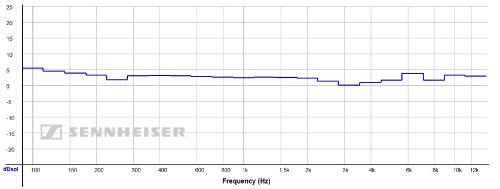squirt
500+ Head-Fier
- Joined
- Jul 26, 2001
- Posts
- 557
- Likes
- 11
and, so, ownership is now permanent?
maybe permanent maybe not. all i'm concerned is that i as long as i'm the original owner that i have proof of ownership in case something were to happen to it. if i were to sell it at some point, it's not my concern what good the certificate is or isn't to any succeeding owner(s) and i very seriously doubt a buyer is going to turn down buying a used HD-800 just because the certificate has someone else's name on it. i'm sure they have enough sense to realize they are buying something that had a previous owner. they can do anything they want with the certificate assuming they want it.
you have a concern that sennheiser is up to something fishy by not including the graph data inside the box. realistically if sennheiser were up to something fishy concerning the graph data they could just as easily do what ever fishy-ness before shipping the headphone and include it in the box. they chose to include the graph on the ownership cirtificate for their own reasons but i don't sense any evil intent on their part.
i think it would be more effective to contact sennheiser direct with your concerns and questions. it's possible they may take them to heart and include the graphs in the box and send out a certificate of ownership latter with or without the graph. this is the first headphone i've owned that provided a graph or certificate so i suspect this is new territory for sennheiser and they may be open to suggestions on how to improve they way they do things.
maybe permanent maybe not. all i'm concerned is that i as long as i'm the original owner that i have proof of ownership in case something were to happen to it. if i were to sell it at some point, it's not my concern what good the certificate is or isn't to any succeeding owner(s) and i very seriously doubt a buyer is going to turn down buying a used HD-800 just because the certificate has someone else's name on it. i'm sure they have enough sense to realize they are buying something that had a previous owner. they can do anything they want with the certificate assuming they want it.
you have a concern that sennheiser is up to something fishy by not including the graph data inside the box. realistically if sennheiser were up to something fishy concerning the graph data they could just as easily do what ever fishy-ness before shipping the headphone and include it in the box. they chose to include the graph on the ownership cirtificate for their own reasons but i don't sense any evil intent on their part.
i think it would be more effective to contact sennheiser direct with your concerns and questions. it's possible they may take them to heart and include the graphs in the box and send out a certificate of ownership latter with or without the graph. this is the first headphone i've owned that provided a graph or certificate so i suspect this is new territory for sennheiser and they may be open to suggestions on how to improve they way they do things.
























